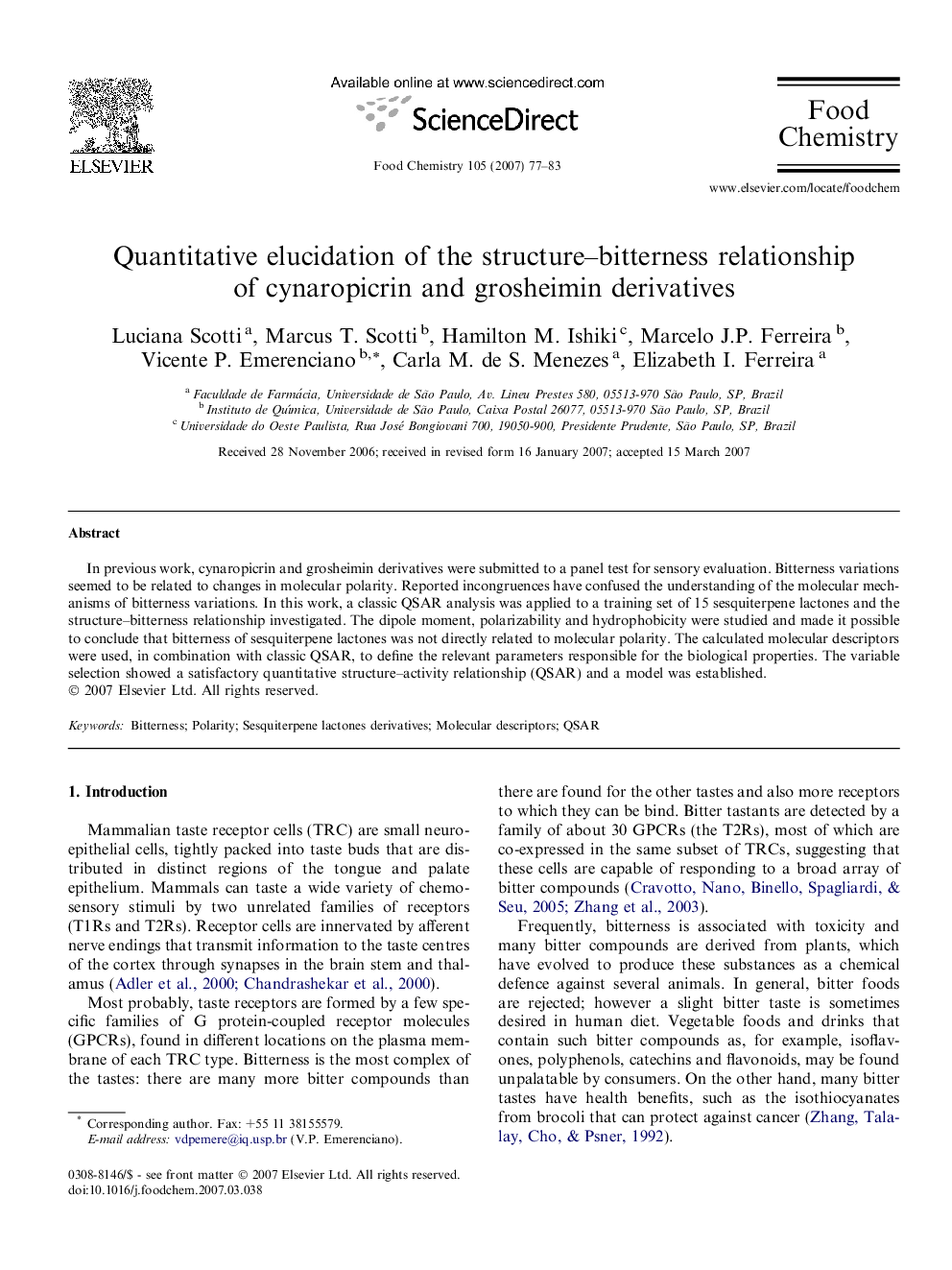| کد مقاله | کد نشریه | سال انتشار | مقاله انگلیسی | نسخه تمام متن |
|---|---|---|---|---|
| 1190234 | 963527 | 2007 | 7 صفحه PDF | دانلود رایگان |

In previous work, cynaropicrin and grosheimin derivatives were submitted to a panel test for sensory evaluation. Bitterness variations seemed to be related to changes in molecular polarity. Reported incongruences have confused the understanding of the molecular mechanisms of bitterness variations. In this work, a classic QSAR analysis was applied to a training set of 15 sesquiterpene lactones and the structure–bitterness relationship investigated. The dipole moment, polarizability and hydrophobicity were studied and made it possible to conclude that bitterness of sesquiterpene lactones was not directly related to molecular polarity. The calculated molecular descriptors were used, in combination with classic QSAR, to define the relevant parameters responsible for the biological properties. The variable selection showed a satisfactory quantitative structure–activity relationship (QSAR) and a model was established.
Journal: Food Chemistry - Volume 105, Issue 1, 2007, Pages 77–83